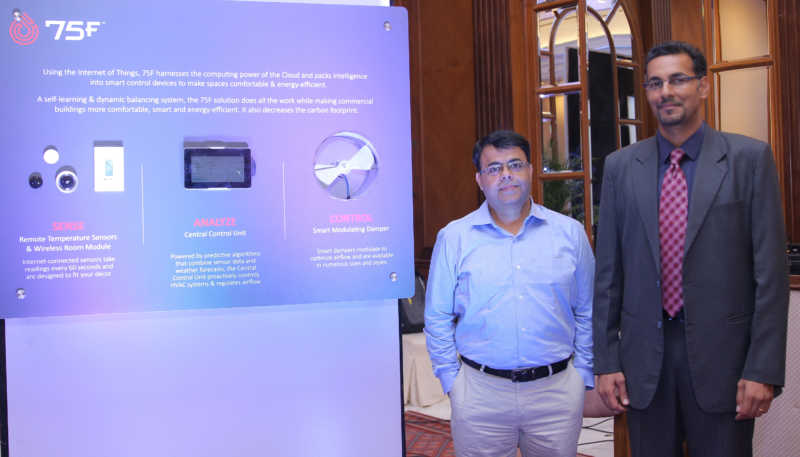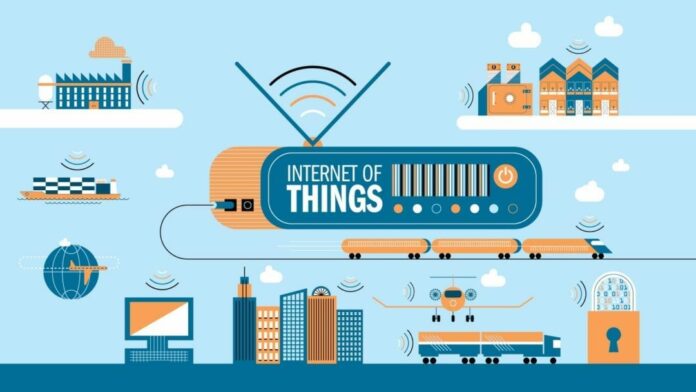75F, a leader in building automation for light commercial buildings in the US, announced the launch of its business operations in India, today. The India Commercial R&D Center was inaugurated by Mr. Shankar Annaswamy, ex- MD, IBM India, yesterday. 75F is also pleased to introduce its award-winning ‘Dynamic Airflow Balancing’ technology to the Indian market.
Headquartered in Minneapolis, USA, 75F creates solutions that use Internet of Things (IoT) and cloud computing to predict building needs and manage them proactively. The solutions make spaces more comfortable, energy efficient, automated and smart. Internet-connected devices sense, analyse and control the behaviour of the building to achieve consistent temperature, airflow and lighting on a zone or room by room basis. 75F saves up to 70% in energy usage, is easy to install and decreases carbon footprint.

Founded in 2012 in the US, by Indian natives Deepinder Singh and Pankaj Chawla, 75F has since won numerous awards for its pioneering technology and has created hundreds of energy-efficient, comfortable buildings. Having installed over 1000 control zones, 75F’s clientele includes Taco Bell, Yoga Fit, Magnet 360, Rockler and many more.
“It is important to note that every building is a dynamic entity and hence the building intelligence system installed should be dynamic as well. We are excited to bring to India our state-of-the-art solutions that leverage the latest in technology and IoT, understand your building’s ever changing needs, and proactively cater to them to ensure that the occupants are comfortable,” said 75F CEO and Founder, Deepinder Singh.
With a little more than 499 million sq. ft. of addressable commercial buildings space, India is a very lucrative market for 75F. Gaurav Burman, VP & Country President, 75F India further added, “We see a huge untapped market in India for IoT-based building intelligence systems ranging from new-builds to retrofits in both enterprises and SMEs. Large or small, the Indian business consumer is looking for comfort and efficiency, power in the palm of his hand, at a cost that is affordable. One of the biggest headaches customers face is how to integrate these new technologies into their existing infrastructure. With a strong R&D team in India, we seek to design and tailor solutions that cater specifically to the Indian market.” When asked about the expected market share in India, he said, “Harnessing IoT to make buildings smarter is new today, but our reading is that in three to seven years, everyone is going to be moving over to these predictive systems. We are a startup in a ₹3500 crore addressable market and we are confident we can capture significant share by FY2018.”
75F also launched its innovative Dynamic Airflow Balancing™ today
Referring to the concept as ‘Internet of Air’, 75F also unveiled its innovative approach to HVAC zone controls called Dynamic Airflow Balancing™. Leveraging IoT design philosophy and the power of cloud computing, the 75F solution achieves what was once thought to be only theoretically possible – continuous commissioning or perfect air balancing. Launched on a national basis, the smart HVAC system has the potential to reduce energy usage by 562 trillion BTUs, enough energy for 24 million cars to be taken off the road.
Wireless Zone Controllers sense and collect hundreds of data points from the room every minute and send the data to the Central Control Unit & from there to the servers in the Cloud. Each night cloud computing algorithms analyse thousands of data points, including the weather forecast & daily usage patterns that allow the system to predict future conditions. Post which, a new set of instructions are sent to the Central Control Unit and the motorised dampers are modulated a few degrees at a time to achieve the perfect balance. The system also factors in real-time events, such as room occupancy, the position of the sun and weather patterns to make continuous adjustments to the plan as needed.
Speaking about the new technology, Pankaj Chawla, CTO of 75F said, “We believe in the promise of IoT to improve our lives by designing systems that work so well, you forget they are there. Currently, we are focused on one of the most serious problems in commercial buildings – HVAC – because it represents the largest single cost of operating a building. Beyond HVAC, there is a need to provide Building Automation Systems (BAS) to commercial buildings that are easy to install, affordable and effective. We look to bring the further benefits of BAS to improve energy usage, lighting, security and more.”











